The Venice Biennale 2024: The Giardini Pavilions (Part 3)
This week, we cover nostalgic scent experiences, the sound of decay, and the challenged promises of a country.
Japan: Compose
The sensation of flickering lights, the gentle sound of windchimes, soft, irregular drumbeats, and the sweet sugary smell fill the bright, light-flooded pavilion. Artist Yuko Mohri (Millenial, Japanese) orchestrates an audiovisual experience with the unconventional help of rotting fruit.
Yuko sourced furniture from fleamarkets and antique stores. The fruits are from local markets in Venice. She attached electrodes to them, and, as they ripen and decay, their fluctuating moisture sends out impulses translated into light and sound. Their life cycle concludes as compost in the Giardini, bringing new life to the local soil.
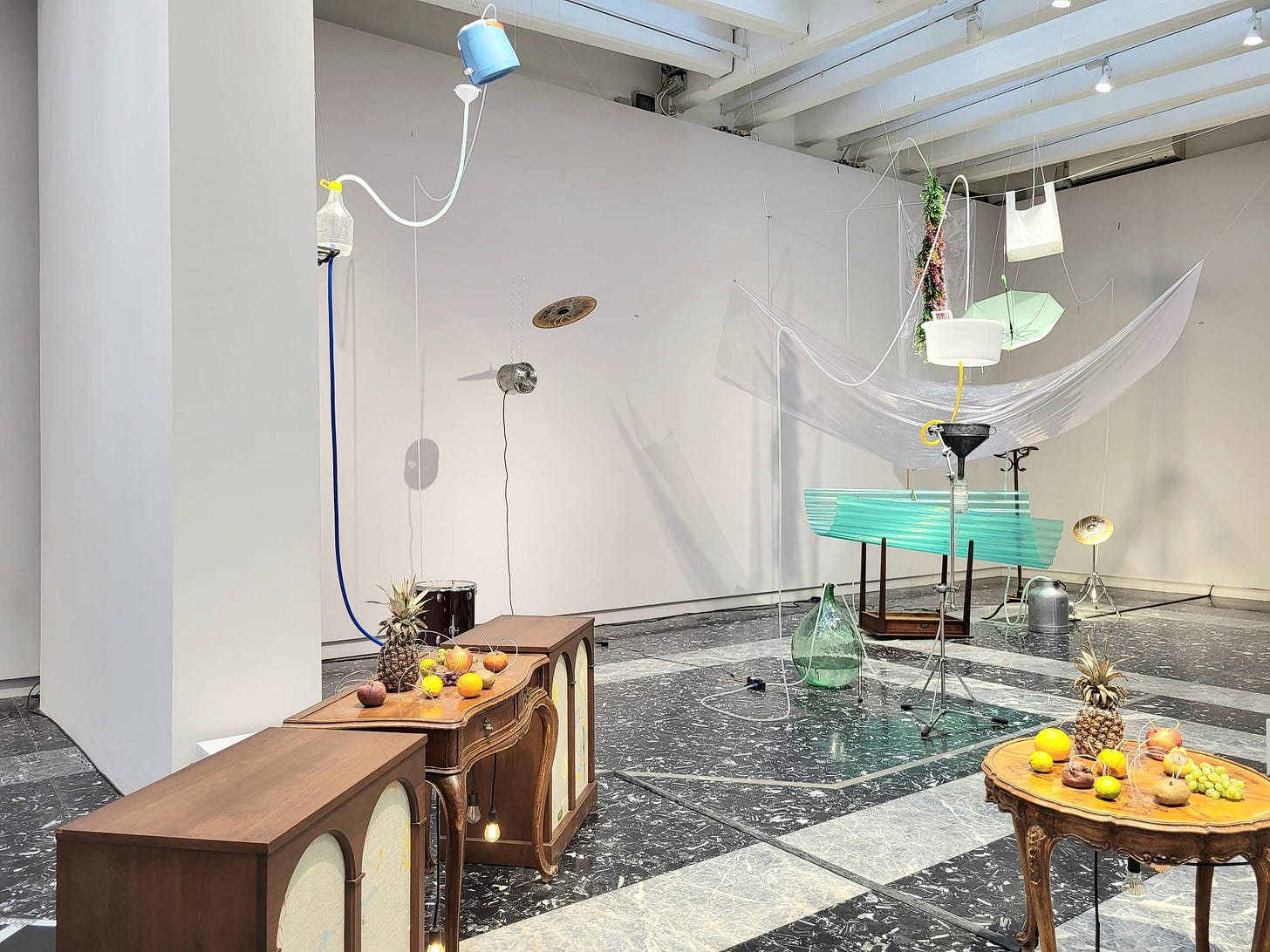
The exhibition title Compose is versatile. Not only does it refer to compost and the decomposure of organic matter. It also refers to composing music, which is what the artist does with the help of produce. And beyond, the title makes me think of composure, as in keeping it together. The artist derived this nuance from makeshift solutions in Tokyo subway stations where leaks are caught with ordinary materials. Yuko purposefully creates leaks in the pavilion which she then catches with umbrellas, buckets, tubes, and whatever she finds available.
Vulnerability, creativity and the natural course of life meet in Yuko's work. It’s an optimistic outlook to me, an example of how crises can be navigated with humbleness and humour. Sometimes, great works of art do great with the simplest materials.
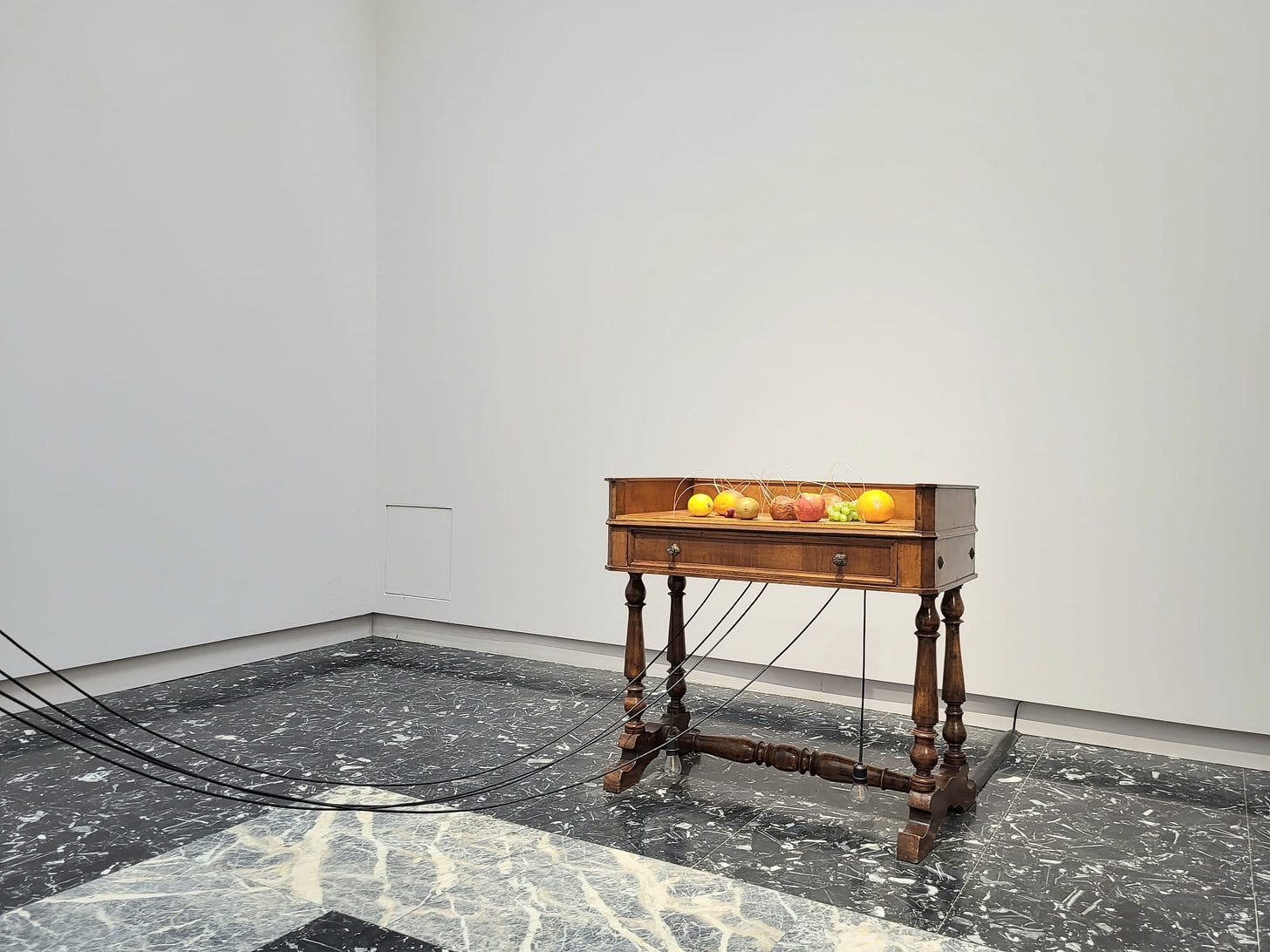
National Pavilion of Japan, Giardini, La Biennale di Venezia
Korea: Koo Jeong A - Odorama Cities
Entering the pavilion, I see… nothing. Well, not exactly nothing. Koo Jeong A (Gen X, Korean) shifts the attention from the visual to scents. They asked Koreans and people who have lived there about the scents they associate with Korea. Jeong A then sent the extensive survey to Parisian perfumeries and commissioned them to create fragrances based on the survey. The open call received over 600 replies, the keywords of which are made public on the website’s database.
Survey participants recalled recent scents and those going back decades. Some were connected to places like temples, others were tied to people, especially their loved ones. From spices to salty air at the beach, the perfume workshops had a lot to work with. They created 16 scents for the pavilion and even one commercial fragrance.
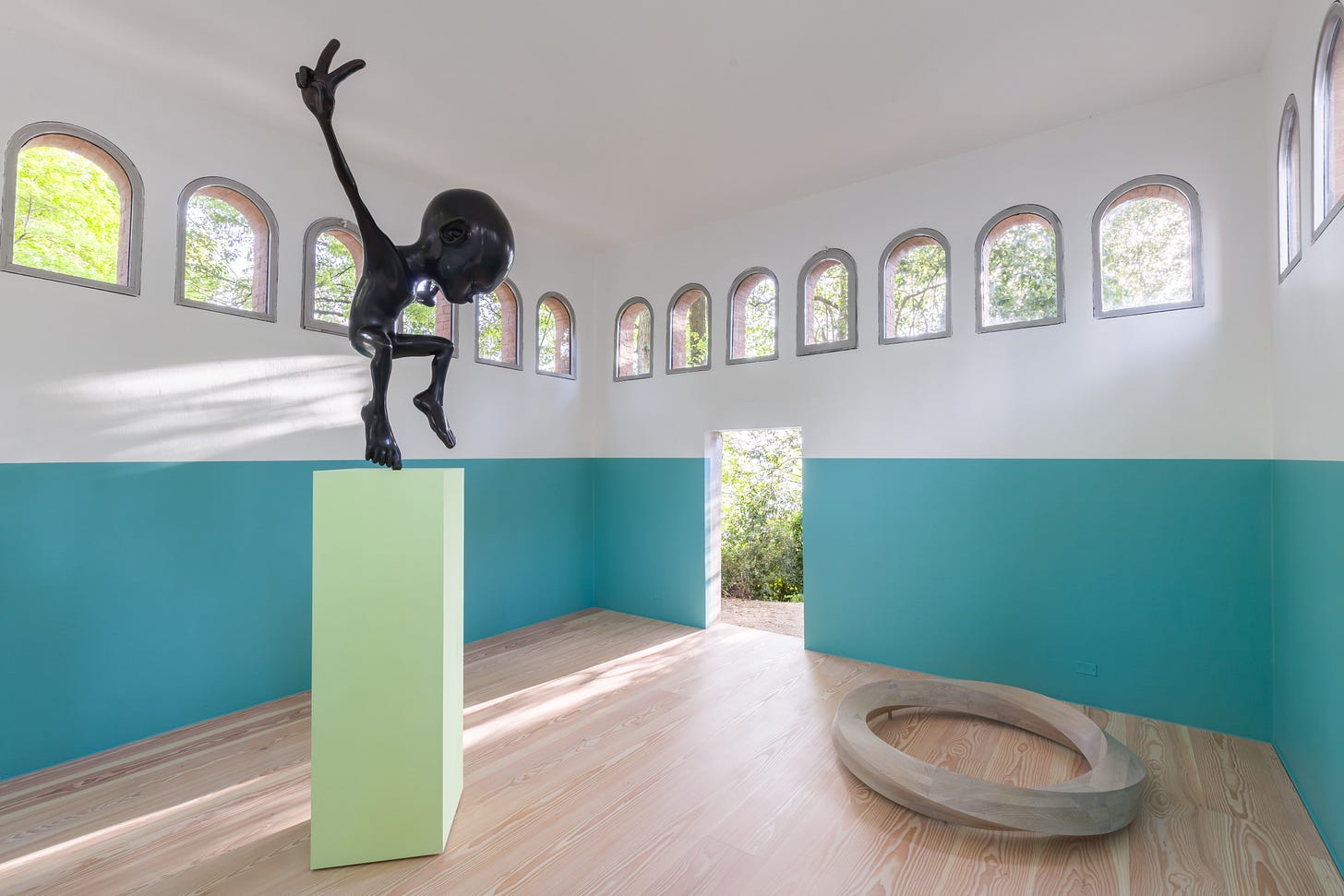
A black sculpture of a child-like figure is breathing out the scents into the exhibition space. It makes me think of meditative breating. Eventhough the sculpture fits to Jeong A’s past works with androgynous child-like bodies, I’d love to see the space go fully minimalist with nothing but the scents.
The few physical details of the space recall infinite forms, which is ironic to me. Scents don’t last forever, they fade just like memories and time do. These infinite shapes connect to philosophies and maths (don’t ask me, the catalogue is like 400 pages of theory), but I feel like these additions are not necessary. A space filled with these scents based on such a thought-through concept would be more than enough. The space was never empty in the first place.
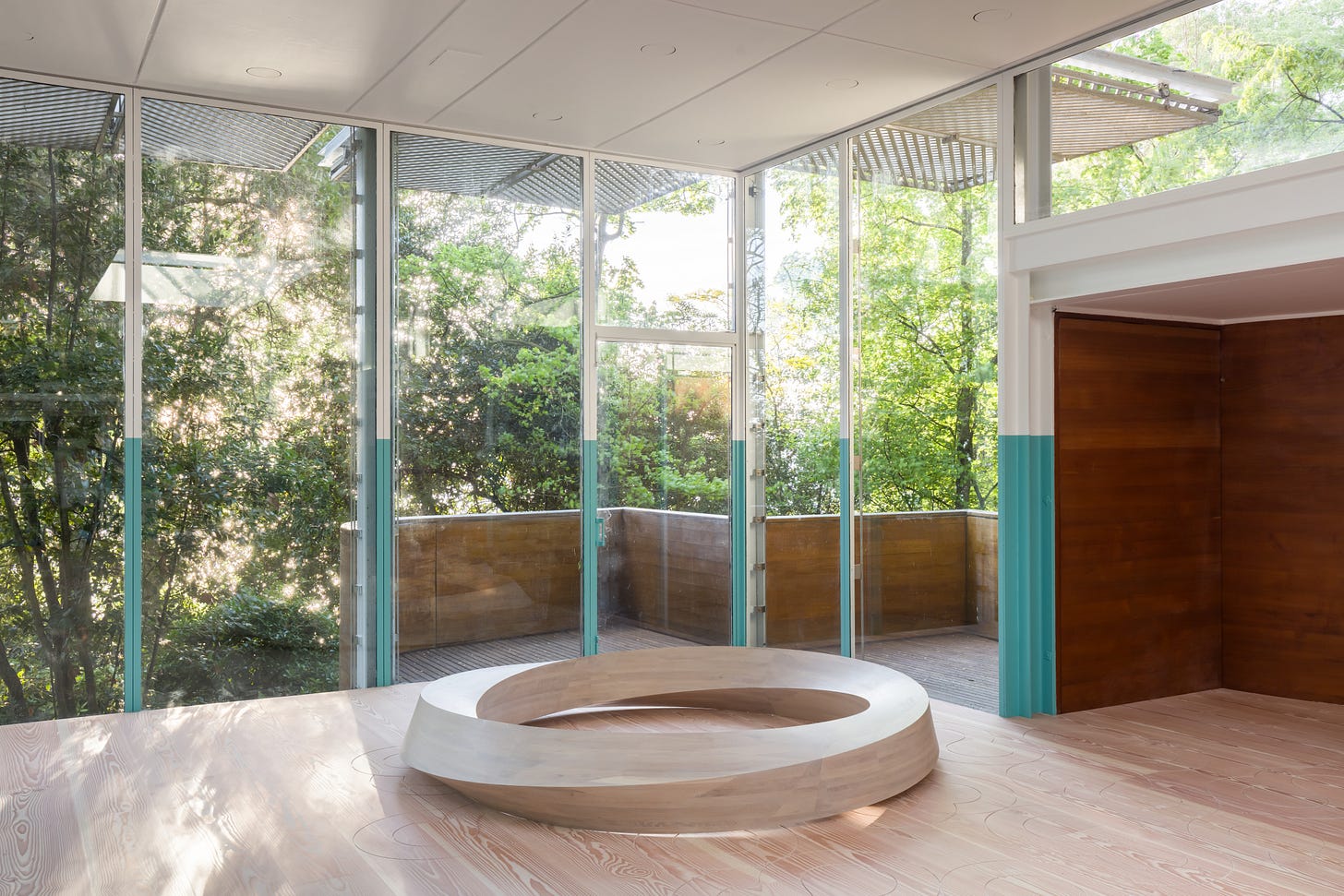
National Pavilion of Korea, Giardini, La Biennale di Venezia
United States: the space in which to place me
Jeffrey Gibson (Gen X, American) drenches the pavilion based on Southern plantation estates in kaleidoscopic rainbow patterns. A bright red sculpture made up of monumental pedestals takes up space in the courtyard. During the opening week, Indigenous artists performed there, becoming the monuments that were for so long absent from public histories.
Past, present, and future meet in Jeffrey’s work when he exposes the failed utopias promised by the US Constitution. Parts of it are written on the façade, barely decodable through the ornamental geometric lettering. The words of a Nation appear here rather conceptual than attainable. Inside, tall beaded sculptures hover over the space, dressed in every rainbow shade. The Enforcer (2024) is one of them, beads forming the words “Reconstruction Acts 1965, 1868, 1870”, refering to the integration process of Black and indigenous people into political participation which was later undone by White Supremacists.
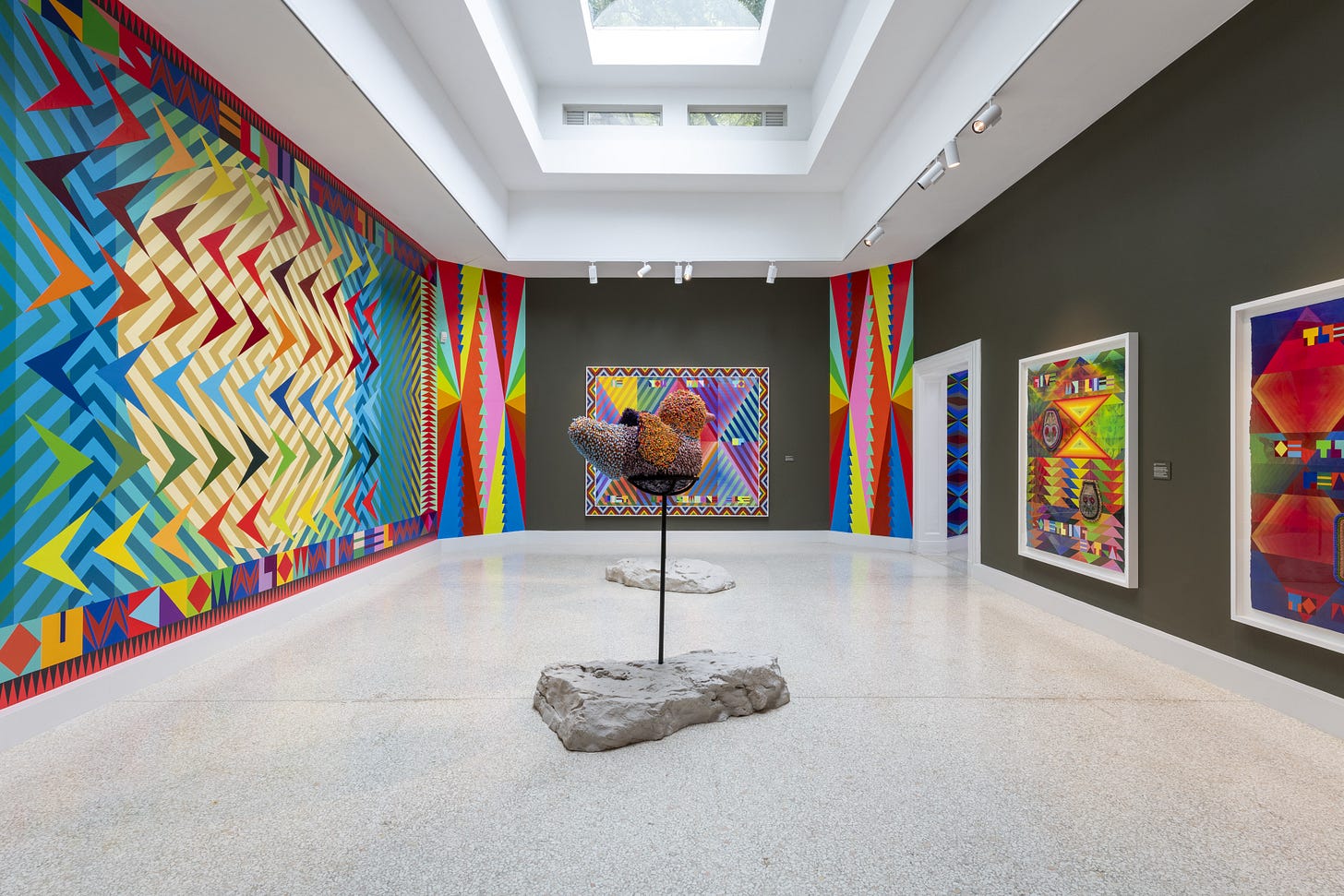
Jeffrey points with enthusiasm toward what is yet to come. In between historical bead objects and his own, the integration of works from other indigenous nations and his Choctaw and Cherokee ancestors, the references to laws and historical freedom fighters, his mixed media works give me certainty of a bright future where heritage is celebrated, not hidden.
The exhibition culminates with the kaleidoscopic video installation She Never Dances Alone (2020) featuring Sarah Ortegon HighWalking (Millenial, American). The artist, dancer, and actor of Eastern Shoshone and Nothern Arapaho ancestry performs the Jingle Dance that was outlawed for a long time. Sarah and the music produced by The Halluci Nation, a First Nations electronic dance group, are unapologetically taking up space. As they should.
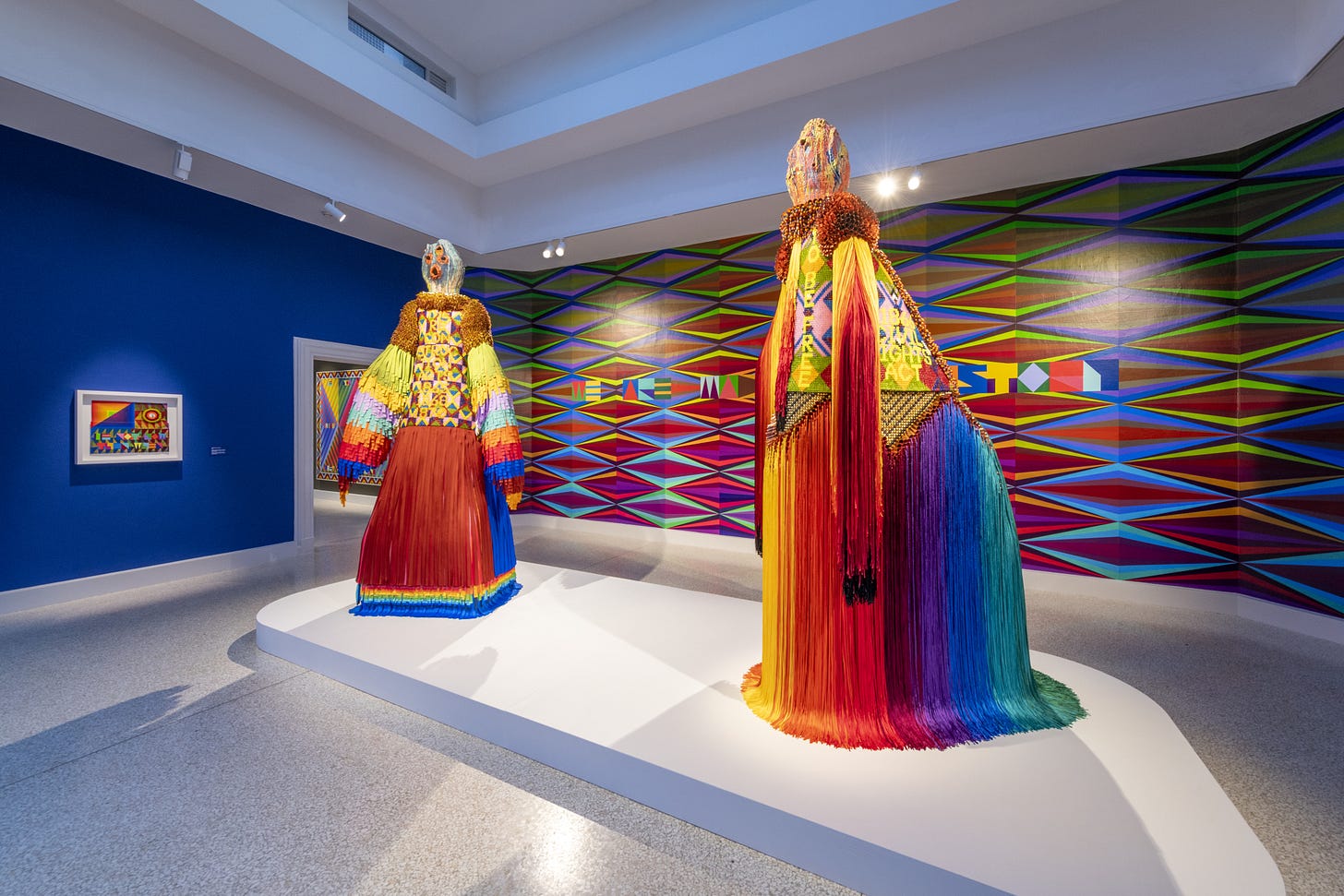
National Pavilion of the United States, Giardini, La Biennale di Venezia
Stay up to date on this year’s International Art Exhibition and subscribe! And if you want to learn about my previous recommendations, check out Part 1 & Part 2!
La Biennale di Venezia
Arsenale/Giardini
Website
Instagram: @labiennale
The International Art Exhibition closes in November, so you have plenty of time. I’d love to know your thoughts on the pavilions this year! Leave me a comment or a like (or both) if you want to, and I’d be happy if you shared this review with someone.
See you soon!!!
Jennifer
The Gen Z Art Critic




